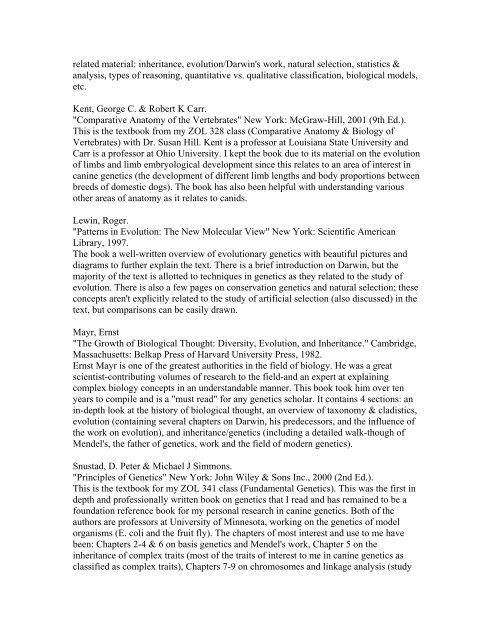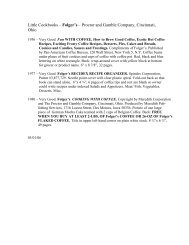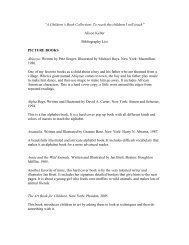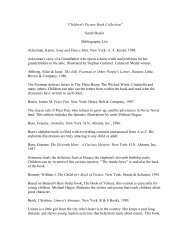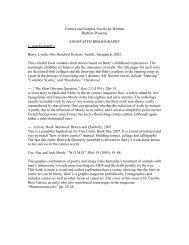You also want an ePaper? Increase the reach of your titles
YUMPU automatically turns print PDFs into web optimized ePapers that Google loves.
elated material: inheritance, evolution/Darwin's work, natural selection, statistics &<br />
analysis, types of reasoning, quantitative vs. qualitative classification, biological models,<br />
etc.<br />
Kent, George C. & Robert K Carr.<br />
"Comparative Anatomy of the Vertebrates" New York: McGraw-Hill, 2001 (9th Ed.).<br />
This is the textbook from my ZOL 328 class (Comparative Anatomy & Biology of<br />
Vertebrates) with Dr. Susan Hill. Kent is a professor at Louisiana State University and<br />
Carr is a professor at Ohio University. I kept the book due to its material on the evolution<br />
of limbs and limb embryological development since this relates to an area of interest in<br />
canine genetics (the development of different limb lengths and body proportions between<br />
breeds of domestic dogs). The book has also been helpful with understanding various<br />
other areas of anatomy as it relates to canids.<br />
Lewin, Roger.<br />
"Patterns in Evolution: The New Molecular View" New York: Scientific American<br />
Library, 1997.<br />
The book a well-written overview of evolutionary genetics with beautiful pictures and<br />
diagrams to further explain the text. There is a brief introduction on Darwin, but the<br />
majority of the text is allotted to techniques in genetics as they related to the study of<br />
evolution. There is also a few pages on conservation genetics and natural selection; these<br />
concepts aren't explicitly related to the study of artificial selection (also discussed) in the<br />
text, but comparisons can be easily drawn.<br />
Mayr, Ernst<br />
"The Growth of Biological Thought: Diversity, Evolution, and Inheritance." Cambridge,<br />
Massachusetts: Belkap Press of Harvard University Press, 1982.<br />
Ernst Mayr is one of the greatest authorities in the field of biology. He was a great<br />
scientist-contributing volumes of research to the field-and an expert at explaining<br />
complex biology concepts in an understandable manner. This book took him over ten<br />
years to compile and is a "must read" for any genetics scholar. It contains 4 sections: an<br />
in-depth look at the history of biological thought, an overview of taxonomy & cladistics,<br />
evolution (containing several chapters on Darwin, his predecessors, and the influence of<br />
the work on evolution), and inheritance/genetics (including a detailed walk-though of<br />
Mendel's, the father of genetics, work and the field of modern genetics).<br />
Snustad, D. Peter & Michael J Simmons.<br />
"Principles of Genetics" New York: John Wiley & Sons Inc., 2000 (2nd Ed.).<br />
This is the textbook for my ZOL 341 class (Fundamental Genetics). This was the first in<br />
depth and professionally written book on genetics that I read and has remained to be a<br />
foundation reference book for my personal research in canine genetics. Both of the<br />
authors are professors at University of Minnesota, working on the genetics of model<br />
organisms (E. coli and the fruit fly). The chapters of most interest and use to me have<br />
been: Chapters 2-4 & 6 on basis genetics and Mendel's work, Chapter 5 on the<br />
inheritance of complex traits (most of the traits of interest to me in canine genetics as<br />
classified as complex traits), Chapters 7-9 on chromosomes and linkage analysis (study


